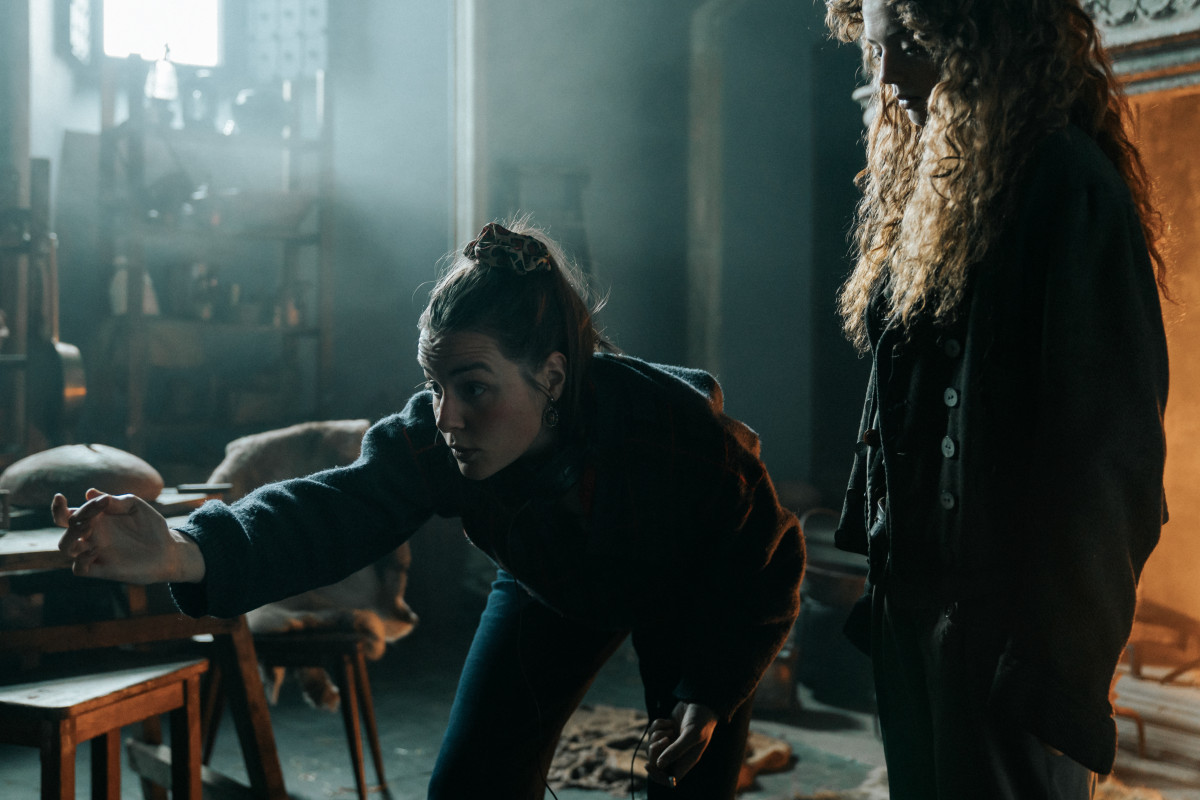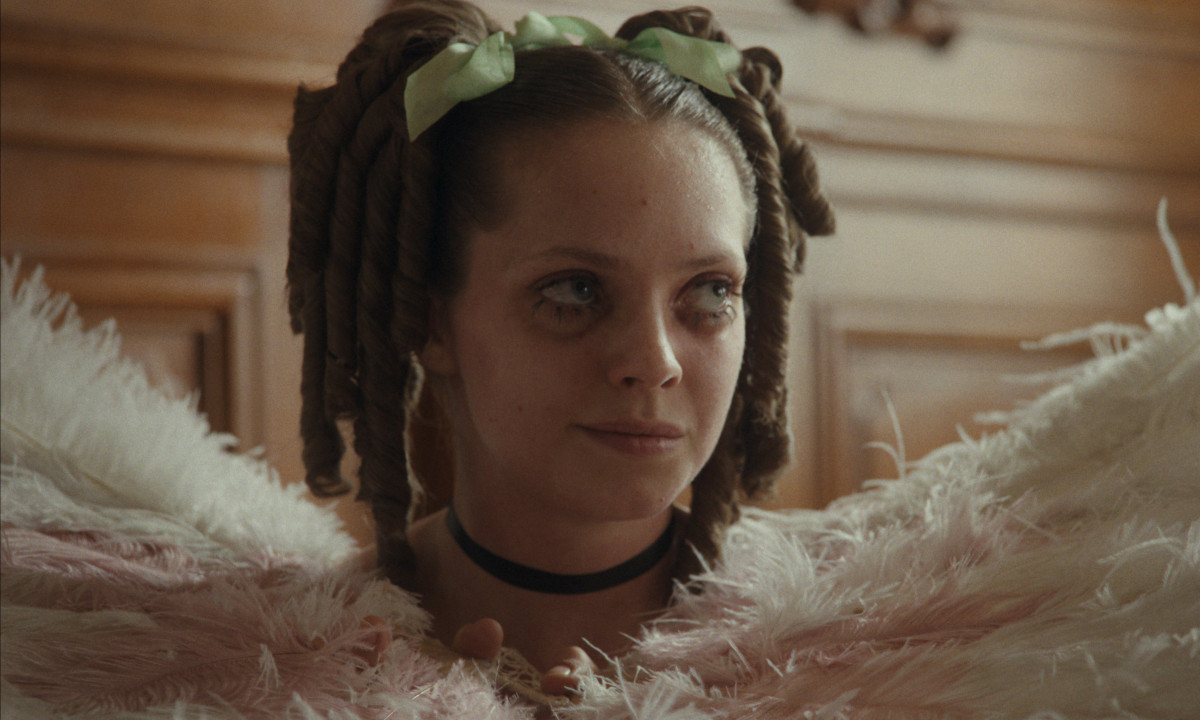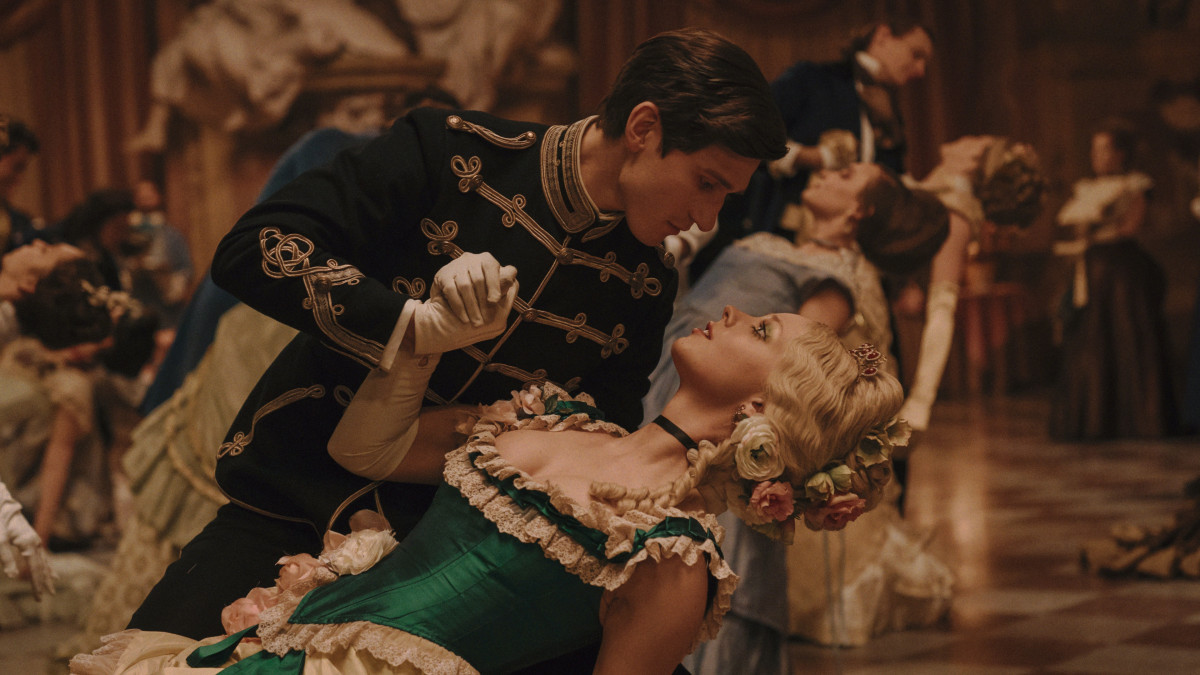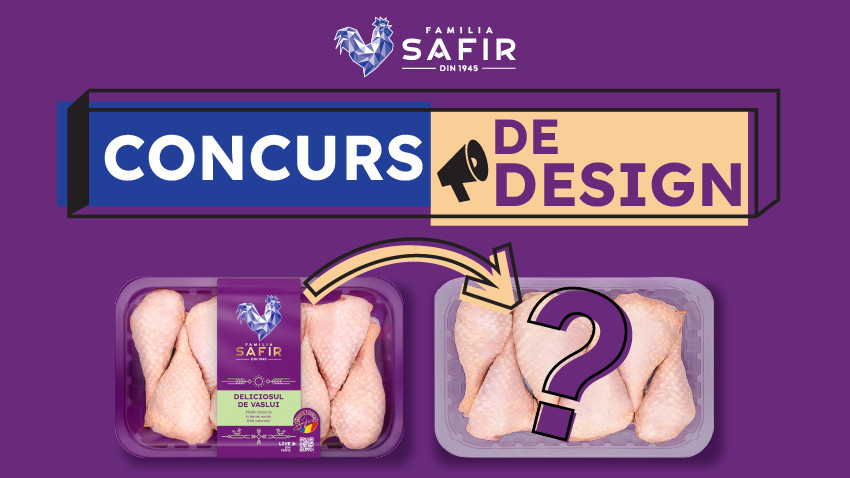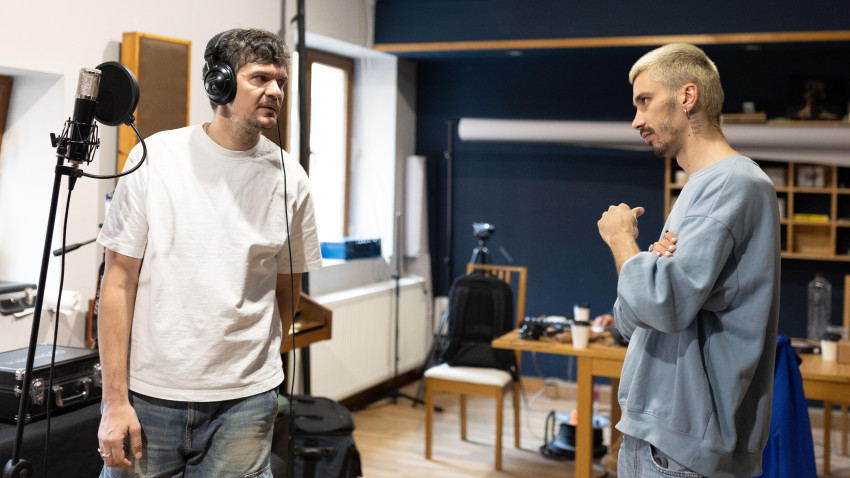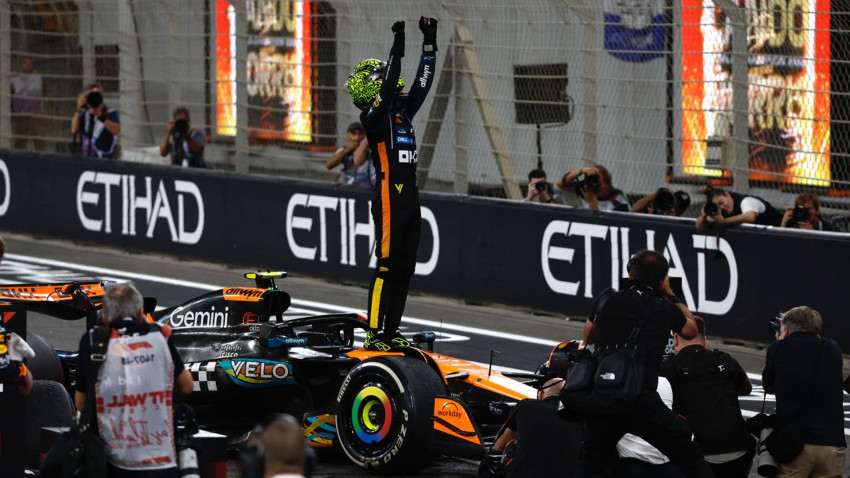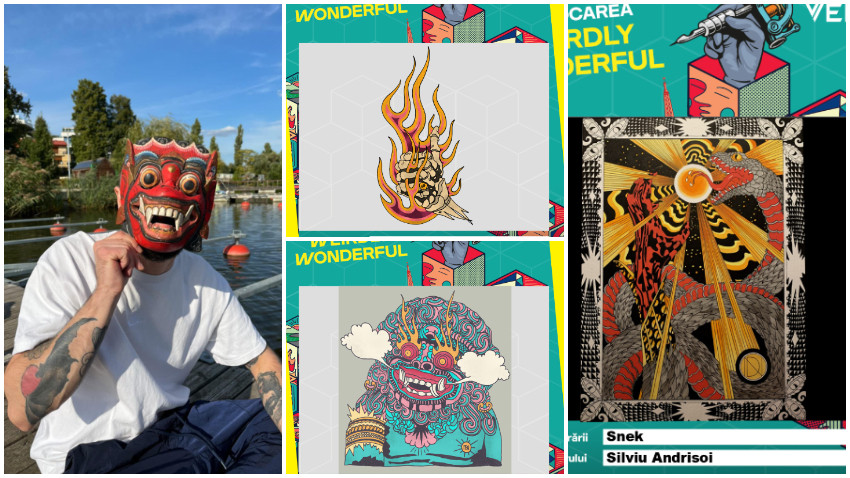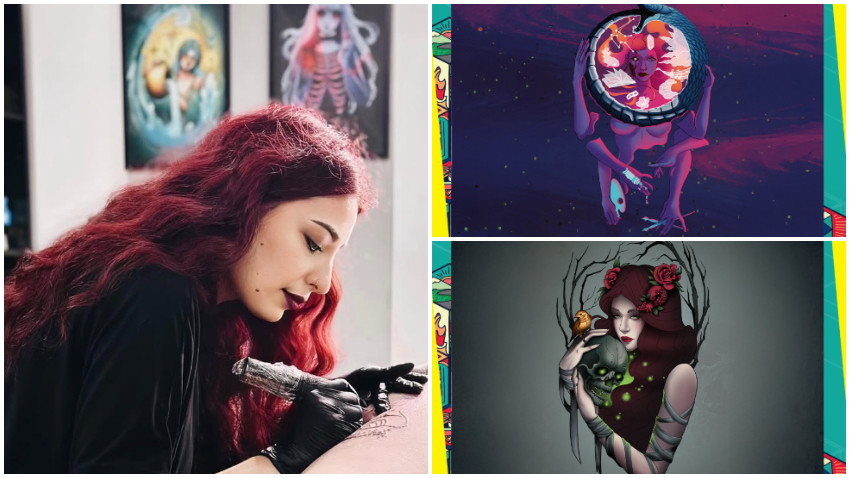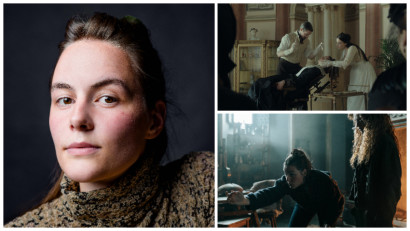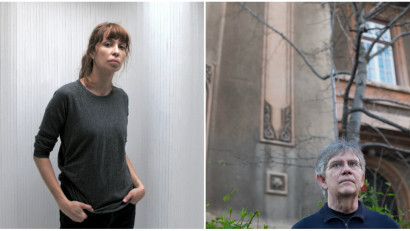The story of the stepsister from „Cinderella”, who cuts off her toes to fit the glass slipper, has not been told further. And it deserves to be recognized in the context of oppressive beauty standards that continue to shape the lives of many young women.
What do we consider beautiful and who decides what is beautiful about oneself? Each person should do it for themselves, not a society for everyone, in droves. From the story of famous fairy tale begins the cinematic work of director Emilie Blichfeldt, who wanted to make a film for „all the young girls who struggle under the burden of feeling ugly”. Her feature film debut, the body horror „The Ugly Sister” tells the story of the stepsister from “Cinderella”.
„I dreamed of being Cinderella, laughing at the stepsisters’ clumsiness. But rereading Grimm as an adult, particularly the scene where one stepsister cuts off her toes to fit the glass slipper, changed my view. For the first time, I empathized with her desperation”, says Emilie.
We talk further more to director Emilie Blichfeldt about her feature film debut. „The Ugly Sister" is in theaters all over Romania now.
A brief history about who you and your professional background
Very briefly I was lucky enough to have my first short films celebrated in important festivals across the world, my Norwegian Film School graduation project from 2018, ‘Sara’s Intimate Confessions’ was selected for festivals such as the 2018 Locarno International Film Festival and the 2019 Clermont-Ferrand International Short Film Festival. „The Ugly Stepsister” marks my feature directorial debut.
The spark that made you want to reimagine Cinderella from the perspective of the “ugly” stepsister
The Ugly Stepsister’s comprehensive concept of "beauty horror” was inspired by body horror and the misogynistic doctrine “beauty is pain,” and continues my exploration of the tyranny of beauty and how it affects young women. It’s a theme that is very personal to me after years of struggling with body image and finding my place within femininity. Through this story, I aim to immerse the audience in Elvira’s experience—provoking empathy, discomfort, and reflection. By mirroring her physical pain in the audience’s own bodies, I hope to create a visceral connection that sparks meaningful contemplation.
Elvira’s journey highlights the agony of adhering to unattainable physical standards.
I am inspired by David Cronenberg's approach to the genre: bodily transformations serve as metaphors for his characters' flaws, dilemmas, inner fears, or even as a political comment on how society affects the individual.
What this version of the story allowed you to explore about femininity, power and identity
The story also draws from the rich history of Cinderella, particularly The Brothers Grimm version, in which the stepsisters mutilate their feet to fit into the slipper. This timeless tale exists in countless variations—from biblical references to Chinese folklore, the well-known French and German retellings, and even an obscure 1970s Czech adaptation treasured in Norway and Germany. Rather than adhering to a single version, I chose to weave together elements that resonated with me, adding my own interpretation. After all, they are all made up stories, folk tales, carried from generation to generation through oral storytelling. Told to entertain, but also conveying prevailing values.
The way you approached the tone of the film, which moves between horror, dark comedy, and social commentary
While it would have been easy to craft a modern Cinderella narrative, I was committed from the beginning to setting this story in the undefined "once-upon-a-time." This choice underscores how the motifs in the film, though resonant with today’s issues, are truly timeless, rooted in cultural traditions that continue to shape our perspectives on beauty and identity.
The movie’s aesthetic
The film’s aesthetic draws heavily from the 1960s and 70s Eastern European fairytale cinema, celebrated for its gritty realism, gothic settings, practical effects, and natural lighting. These films strike a unique balance between the real and the unreal, creating an uncanny enchanted realism that became central to The Ugly Stepsister.
Even before collaborating with Manon Rasmussen on costumes, I was deeply involved in shaping the wardrobe. Fashion is a passion of mine, and I conducted extensive research early on, defining silhouettes, periods, and details that aligned with the film’s vision, even consulting with fashion icon Lady Amanda Harlech. While some designers found my input unconventional, Manon welcomed it from the start.
Her legendary expertise—shaped by her work on all of Lars von Trier’s films and having won 17 Danish Academy Awards—brought a grounded authenticity to every piece. She has an unmatched talent for crafting costumes that feel like an extension of the character, incorporating worn, stitched textures to make the actors feel at home in their roles. Together, we play with Disney's iconic silhouettes for Cinderella and the stepsisters, tying these designs to the mid/late 1800s when cosmetic surgery was beginning to emerge in medical practice.
Casting Lea Myren as Elvira. What you looked for in her
The standout revelation of this project, unsurprisingly, was Lea Myren as Elvira, the stepsister.
From her very first audition, I was captivated; for the first time, I truly saw Elvira. Lea’s unpretentious physicality, sharp comic timing, and unwavering dedication immediately marked her as the perfect fit. However, it was only later that I fully realized what a gift she truly is. Her fearless and wholehearted portrayal of Elvira—navigating innocence and dreams, descending into madness, pain, and even
visceral moments like vomiting—is unforgettable and groundbreaking. Lea embodies everything I wish I had dared to be and do as a young woman, free from the constraints of body image struggles. She is not only an incredible talent but also a beacon of hope and inspiration for future generations of girls and women.
„The Ugly Stepsister” was described as a “body horror” film and feminist fairytale. How will audiences engage with that ambiguity?
Fairytales present clear-cut characters: pure good or irredeemable evil. We naturally empathize with Cinderella, while the stepsisters and stepmother are easy to scorn.
In the Brothers Grimm version, the stepsisters are described as evil but physically comparable to Cinderella. Walt Disney, drawing from Charles Perrault’s French version, cemented the idea that inner and outer beauty are intrinsically linked - kindness belongs to the beautiful, while ugliness signifies cruelty. The stepsisters are mocked for their big noses, big feet, and delusional belief that they could win the prince’s favor.
As a child, I shared this perspective. I dreamed of being Cinderella, laughing at the stepsisters’ clumsiness. But rereading Grimm as an adult, particularly the scene where one stepsister cuts off her toes to fit the glass slipper, changed my view. For the first time, I empathized with her desperation. The mockery and cold laughter at her expense felt unjust. I, too, have longed to be chosen—whether by a prince or simply a boyfriend - and felt the sting of failing to fit impossible standards. No matter how hard I tried to conform, I could never fit into Cinderella’s shoe because I am a stepsister too. This realization sparked a need to retell the story with new insight. I wanted to breathe life into all the characters, freeing them from their rigid archetypes.
Cinderella isn’t just an ideal; she’s a girl with secrets untold by Grimm, Perrault, or Disney. But I didn’t want to flip the narrative and make the stepsister the hero or Cinderella the villain. Instead, I sought fairness.
When viewed through the social and economic lens of the past, the unreasonable actions of fairytale characters become understandable. For women, securing a husband was often essential for survival and social mobility. Appearance became their primary asset, and failure to marry was catastrophic. Yet even within this framework, many dreamt of romance and the chance encounter, where the longing for social ascendance and true love merged into a higher unity. I wanted to honor these complexities in reimagining the tale.
Working with the actors starting from casting phase
As the film is a fairytale, I wanted actors with a wide range—capable of embracing the absurd and heightened emotions while staying grounded in the reality and humanity of their characters. I approach casting with an open mind, unconcerned with predefined notions of how a character should look or be portrayed. For me, the character comes to life during auditions, through the actor’s interpretation. The casting process for the main roles was challenging—until, suddenly, the right people emerged.
Finally, the argument for your feature directorial debut with „The Ugly Stepsister”
The stepsister’s tale, long overshadowed, deserves to be recognized as a powerful commentary on the oppressive standards that continue to shape our lives. I made this film for young Emilie who had big feet and a low confidence around boys. I made this film for all the young girls who struggle under the burden of feeling ugly, but I hope this film reaches far beyond that, because the questions it raises—about what we consider beautiful and who gets to decide—concerns us all. In empathizing with Cinderella, but mocking the stepsister, we have been deceived to betray ourselves. There is only one Cinderella. The rest of us, struggling to fit the shoe, are stepsisters.



